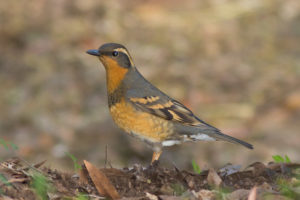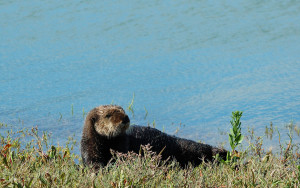One can’t help but envy the homeowners living on the shoreline of Richardson Bay in southern Marin County. There is a quiet stillness there–perhaps too quiet. Before the onset of residential and commercial development here, the bay’s margins held a soft mosaic of marshes, tidal creeks, tidal flats, and beaches, all alive with wildlife. But for many years those margins have been hardened by riprap, condos on stilts, and homes hovering above boat docks in the water.
Aramburu Island, a 17-acre unobtrusive man-made spit in the northwest corner of the bay, is an exception. The island, managed by the Marin County Department of Parks and Open Space, is about to get a $2.2 million face-lift from the Richardson Bay Audubon Center and Sanctuary.
The island was hardly noticed until the freighter Cosco Busan dumped 58,000 gallons of bunker oil near the Bay Bridge in 2007. When Richardson Bay Audubon staff and volunteers went out in boats looking for oiled and sick birds, they were surprised to find western and Clark’s grebes, ruddy ducks, and surf scoters–birds that only come to shore when stressed–taking refuge on Aramburu. In the following months, during a sewage spill and an avian cholera outbreak, the island again served as a refuge. Brooke Langston, director of Richardson Bay Audubon, thought if these birds used the island when in danger, others might use it on a daily basis if it were restored from a “funky weed-ridden island into usable habitat.”
Aramburu Island started its life as the northern end of Strawberry Spit, a dumping ground for dredged and excavated soils. Soon nonnative French broom and ice plant took hold. Starting in the late 1960s, harbor seals used the dredged channel off the northeastern edge of the island to haul out in a sheltered cove. In 1975, an estimated 30 percent of San Francisco Bay’s harbor seal population took refuge here. The seals gradually stopped using the island, likely due to human disturbance, and no seals have been seen here since 1985.
In 1987, Strawberry Spit was split in half by a 165-foot dredged channel. Sixty-two homes were built on the southern end of the spit, and the northern end, left as a natural area, was christened Aramburu Island.
Now, Audubon and the county are embarking on a restoration project to stabilize the eroding eastern shoreline, enhance wetland and terrestrial habitats to encourage seabird and seal use, and redesign the terrain to provide resilience in the face of sea-level rise. Currently, there is a steep and unstable divide between the higher elevations (up to eight feet) and the intertidal zone. The restoration will create a gentle rise with coarse sediment that should give the habitats time to transition as sea levels rise by as much as 16 inches by 2050.
“It’s important to protect habitat as each level is inundated,” says Langston. “Whatever is left becomes more precious.”
For updates and opportunities to volunteer, go to tiburonaudubon.org.

.jpg)



